Author of Best-Selling Book That’s What She Said and Former Top of USA TODAY, The Wall Street Journal and Conde Nast
Joanne Lipman
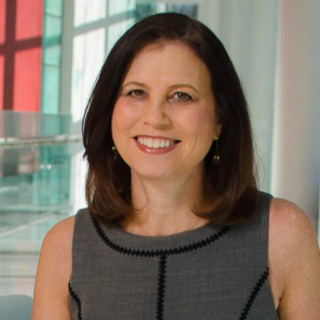
Joanne Lipman, author of the Best-Seller “That’s What She Said,” former Editor in Chief at USA TODAY, and top editor at The Wall Street Journal and Conde Nast, has impacted the corporate world by joining women and men together in addressing the issues women face in the workplace. In an interview with NAWRB, she shares her most memorable experiences working at some of the nation’s most prominent publications, the way social media has changed the media landscape and her top five solutions organizations can use to achieve gender equality.
NAWRB: What are some of your most memorable and least favorite moments working as Editor in Chief at USA TODAY and The Wall Street Journal?
Joanne Lipman (JL): All of my favorite memories have to do with my colleagues. To create great journalism, and do it with people you love, is for me the most fulfilling thing outside of your family that you can do. I spent 22 years at The Wall Street Journal. To this day, many of my closest friends are people who I grew up with at The Wall Street Journal. It was a place that was changing a lot while I was there.
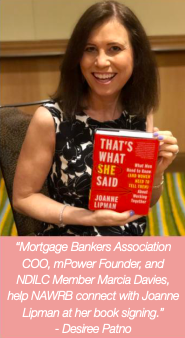 I started as an intern when I was still in college, and there were very, very few women. By the time I left, that had changed entirely. I was in a position where I was able to help mold coverage, I created Weekend Journal and Personal Journal at The Wall Street Journal, and I oversaw the creation of the Saturday Paper.
I started as an intern when I was still in college, and there were very, very few women. By the time I left, that had changed entirely. I was in a position where I was able to help mold coverage, I created Weekend Journal and Personal Journal at The Wall Street Journal, and I oversaw the creation of the Saturday Paper.
It was such a pleasure to go to work every day, because we were doing work that we felt had meaning and purpose. I was very mission-driven, and doing it with the people I loved.
Similarly at USA TODAY, my best moments there were when we could do excellent journalism with people who were like-minded and were pulling for one another. Those qualities are very important: that you feel like your work is mission-driven, and you believe in why you are doing it, and that you are doing it with people that you care about.
I’m on the news side, so we reported on facts, not opinions. We were all about news coverage. There are a few rules I grew up with professionally that I believe in firmly, which I brought with me from the The Wall Street Journal to the business magazine I ran, Conde Nast Porfolio and then to the USA TODAY Network.
First, our job is to shine a light in dark corners and hold the powerful to account, no matter what their political beliefs.
I also believe in the “No Surprises” rule: Whoever you are writing about should not be surprised by allegations that they aren’t aware of and haven’t had a chance to respond to.
The “No Surprises” rule means let them respond before you go to press. They may not like the story – and there are plenty of people who don’t like what’s written about them – but the coverage is fair. You cannot argue with a story that it is fair.
One other crucial journalistic rule is to avoid pack journalism. That is harder today than it ever has been. Pack journalism is when you are jumping on the same story everyone else is jumping on.
President Trump is a master at distracting the news media. For example, first everyone is reporting on the children who have been separated from their families at the border- and then suddenly he is tweeting about something else, and they all run to that story. As journalists, it is our job to not be distracted, and not run after the new shiny thing that perhaps has less substance.
You see pack journalism most frequently in Washington and Hollywood. The reporters on those beats know one another, talk to one another, and end up chasing the same stories. At the same time, in both places the access to the players is controlled, and the players are trying to manipulate or control the storyline. That’s where you have to be particularly careful not to just follow the pack.
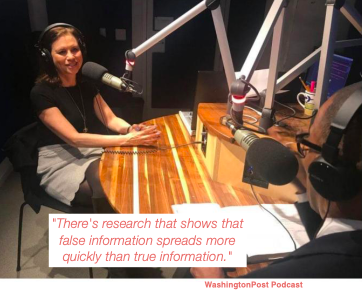 The least favorite moments have been that in recent years the media industry has been under terrible financial stress. In leadership positions, unfortunately one of the duties that falls to you is, when your budgets are slashed, you have to downsize – to lay off newsroom employees. Without question, there is nothing worse than that professionally.
The least favorite moments have been that in recent years the media industry has been under terrible financial stress. In leadership positions, unfortunately one of the duties that falls to you is, when your budgets are slashed, you have to downsize – to lay off newsroom employees. Without question, there is nothing worse than that professionally.
When you’re a leader and you put together a team, the people who are on your team are there because you really believe in them, and you have a relationship with them. So it’s a horrendous situation when you face budget cuts.
NAWRB: Who has been the most influential person in your life and what do you most attribute to their rubber stamp?
JL: Without question, I would say my parents, and particularly my dad who passed away 12 years ago. My mom, who was a force of nature, gave up her career to have kids, as most women did at that time. She would have been a kickass CEO, honestly. She was brilliant, organized, and had real leadership skills. My dad was a businessman. From before I was born, every single morning The Wall Street Journal landed on our doorstep. Because I became interested in writing, my dad really encouraged me and was really proud of my work.
I grew up in New Jersey. When I was in college, I had an internship at a magazine in New York City. My dad also worked in Manhattan, so for that one summer, I would commute with my dad every day. He would even invite me to his business lunches on occasion. It was an entry into this whole other world that he had away from home.
We commuted together by bus, and for the first time ever, because there were no cell phones back then, I actually picked up his The Wall Street Journal and started reading it. That is when I fell in love with the newspaper. I decided that my goal was to get an internship at The Wall Street Journal, which I did. They hired me as soon as I graduated, and I spent the next 22 years there.
Professionally, I have had some phenomenal mentors. Almost all of them were men, because there weren’t that many women. I, myself, have mentored both men and women. I have a special place in my heart for young women coming up, because they can have role models that I did not have.
I have had phenomenal professional mentors, and I would say at the top of the list would Paul Steiger, who ran The Wall Street Journal. He was my boss and he gave me opportunities, such as creating the Weekend Journal, the Personal Journal, and Saturday Journal.
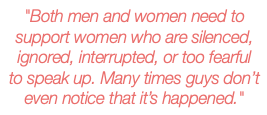 NAWRB: What is something people would be really surprised to know about you?
NAWRB: What is something people would be really surprised to know about you?
JL: Those who know me as a journalist, would be surprised to know that I was a very serious musician as a kid. I played the viola. My first book, which I co-authored, is called Strings Attached, a music memoir that focuses on my childhood music teacher. I wrote it with the teacher’s daughter, Melanie Kupchynsky. We grew up together, and she is now a violinist with the Chicago Symphony.
The reason I wrote the book was because I realized there was so much that I learned from my music teacher, which had to do with focus, determination, the ability to fail and pick yourself back up again. When the book came out, Melanie and I went on book tour and we would end it with a minute-long little duet, which is all I can handle these days!
Something else that people don’t know is that I am a breast cancer survivor. I was diagnosed seventeen years ago, when I was very young. My boss knew, and just a handful of my close colleagues knew, but I just didn’t want to make it an issue. I went through surgery and chemo and radiation, and did not tell people at work.
NAWRB: Women are often silenced in the corporate boardroom, whether by others or themselves for fear of consequences. Should we be risk-takers ourselves and support them and their ideas?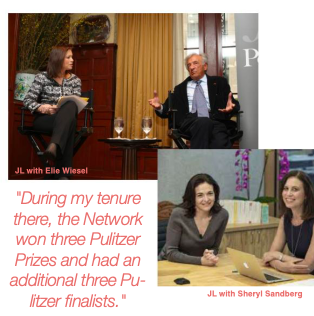
JL: Absolutely, both men and women need to support women who are silenced, ignored, interrupted, or too fearful to speak up. Many times guys don’t even notice that it’s happened. A very common scenario is when a woman mentions an idea, and no one responds – until a man repeats her idea, and he gets the credit. We need to listen for those moments. It’s incredibly important to support the woman who said it first.
There are ways to do this that are quite easy. For example, you can say, “Thanks, Bob. When Barbara mentioned that a few minutes ago, I thought it was a good idea, too. Barbara, I’d love to hear you elaborate on it.” It’s a way to remind everybody that it was Barbara’s idea. I think everyone should be empowered to do that, both men and women. Even a junior person can do that comfortably.
Same thing for when women are interrupted. You can say, “I’d love to hear what Barbara was saying first.” Leaders should be listening for these sorts of things – women being interrupted, their ideas being appropriated by men, or their voices not heard – and should make sure that the woman gets credit and that her voice is heard. If the leader does not notice it, then any one of us in that room should call it out.
NAWRB: How can we best communicate to men the issues women face without making them feel demonized?
JL: I’d say don’t bring it up in the heat of the moment, when a man has just said something bone-headed. The time to do this is when you are having a neutral conversation at a neutral time. You can do this in mixed company, or in a social setting, such as with both men and women at dinner. I very often will bring this up at a dinner. I’ll ask the men, “Hey, have you noticed that things in your office have changed since people started talking about #MeToo? Did you feel like you had to change your behavior?” I’ll just bring it up as a conversation starter and allow the issues to be aired.
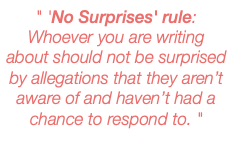 One of the major issues preventing men from being a part of this gender-balance conversation is fear. There’s research that shows that 74 percent of professional men, when asked “What might prevent you from championing gender equality?” said “Fear.” They are afraid of loss of status, or that other men will disapprove of them. They are also afraid they are going to say the wrong thing.
One of the major issues preventing men from being a part of this gender-balance conversation is fear. There’s research that shows that 74 percent of professional men, when asked “What might prevent you from championing gender equality?” said “Fear.” They are afraid of loss of status, or that other men will disapprove of them. They are also afraid they are going to say the wrong thing.
One way women can ease into this is to make it a conversation—not an argument, not a fight, not an accusation.
NAWRB: How has the influence of media changed, and what should both consumers and professionals need to be mindful of?
JL: The influence of media has changed, not so much because of the 24/7 hour news cycle, but because of the explosion of digital media and, in particular, social media. Now everyone can weigh in. Instead of ending up with better quality of information, you actually end up with poor-quality information.
Part of that is the big technology platforms incentivize all of us to share poor-quality information. Their business models are built on virality. They want information that is going to be spread, read and shared by the largest number of people, because they make more money that way.
There’s research that shows that false information spreads more quickly than true information. The other data point is that when researchers look at what emotion spreads fastest, it is outrage. It is anger.
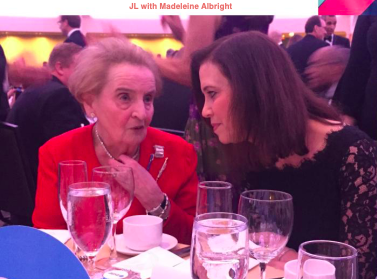 So we are being incentivized to spread this divisive and false information. I think we need improved news literacy out there. I’d love to see news literacy taught in schools. The tech platforms also need to play their part, to acknowledge the problem and be much more proactive in solving for it.
So we are being incentivized to spread this divisive and false information. I think we need improved news literacy out there. I’d love to see news literacy taught in schools. The tech platforms also need to play their part, to acknowledge the problem and be much more proactive in solving for it.
NAWRB: What are some of the greatest obstacles to gender equality in the workplace and your top five solutions?
JL: I’d say there are two great obstacles. One of them is institutionalized sexism. The second one is unconscious bias – the biases that we all have that we don’t even realize exist. That unconscious bias ends up feeding into what I call a “respect gap” between men and women. Research shows that if you put a man and a woman in the same job, same responsibilities, and same title, the man gets greater respect and he has more influence in the same job. There are institutional, cultural, and structural barriers that we have to overcome.
But there are steps we can take. I’ll mention five easy ones. First, interrupt the interrupter. Women are interrupted three times more frequently than men are. So, when a woman is interrupted, anyone should be empowered to call it out and say, “Let her finish.”
The second is amplification. Often, when a woman mentions an idea in a meeting, no one hears her until a man repeats it, and then he gets the credit for it. Amplification is when the woman says something and then another person, a man or woman, repeats her point and gives her credit for it – thus amplifying her voice and making sure she gets the credit for her idea.
A third stategy, which is one of my favorites, is “brag buddies.” This concept was invented by women in a consulting firm. Brag buddies is when one woman recounts her awesome achievements to another woman and vice versa – and then each of them goes to the boss and brags about the other one.
A fourth tactic is to call out bad behavior when you see it. This is particularly true for men. There are a lot of good guys out there who would like to be part of the solution. They themselves make an effort, by mentoring and promoting and supporting women. However, when they see bad behavior from other men, it’s awkward and they don’t say anything. It’s not enough to be a good guy. You actually have to call out bad behavior when you see it in others.
The fifth one is diversify the interviewers and decision-makers, not just the applicants for a job. We should all know by now that if you have a job opening you should have a diverse slate of candidates. Also, when people are being considered for the promotion, you should have a diverse slate of people who are up for promotion.
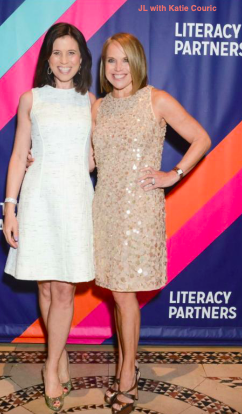 But that is not enough; you have to diversify the decision-makers. For example, if you have a bunch of white guys that are interviewing the applicants, you’re not going to get optimal results because we all gravitate toward people who are like us. This is also why women, people of color and others who are not in the mainstream, are underrepresented.
But that is not enough; you have to diversify the decision-makers. For example, if you have a bunch of white guys that are interviewing the applicants, you’re not going to get optimal results because we all gravitate toward people who are like us. This is also why women, people of color and others who are not in the mainstream, are underrepresented.
This is one of the biggest obstacles to them getting promotions and moving up the ladder. It’s because the decision-makers, the ones who are interviewing or making the promotion decisions, are homogeneous. They are the ones who are saying, “That woman is too quiet,” or “She is too pushy,” or “she’s not a good culture fit.” “Not a good culture fit” is just coded language for “Isn’t like me,” and that really hurts women and other underrepresented groups. You have to diversify the group of people who are interviewing and making those decisions.
NAWRB: What achievements are you most proud of personally and professionally?
JL: Personally, my kids—100 percent. Nothing comes close. As a mother who worked a lot of hours, I had a lot of guilt when my daughter and son were young. But they’ve grown into terrific young adults. They are both feminists. They both are also really hard workers.
Professionally, I’m most proud of the work I have done that has had an impact. Journalism is more of a calling than a job, and journalists are mission driven. There have been a variety of projects, articles, and new initiatives that I have been involved with that have helped drive positive change – from investigative reporting that has exposed wrongdoing, to projects that have helped educate & inform people, to those that improve people’s lives.
Most recently would certainly be That’s What She Said. It is a best-seller, which is nice, but what it signals is much larger than that: it’s that a growing number of people are eager to close the gender gap and create a more equitable world. The book is being embraced by a lot of male-dominated organizations. The reason I wrote it is because I do want men to be a part of the solution in closing the gender gap. As I speak to different organizations and groups, and as I hear from readers, more and more men are championing the book. It is gratifying to see that.
I’m very proud of the work that our journalists did at the Wall Street Journal, Conde Nast and USA TODAY. My mandate as chief content officer of Gannett was to help bring together all 110 of its newspapers, including USA TODAY, as the USA TODAY Network. The Network enables all of those news organizations to work together, to help one another, and to aim for the most ambitious and impactful journalism. During my tenure there, the Network won three Pulitzer Prizes and had an additional three Pulitzer finalists.
That, of course, was a group effort with so many talented journalists. It feels really good when you have an organization that is all pulling in the same direction, working together, and where we are all stretching and challenging one another to raise the bar for our work.
NAWRB: Where does Joanne Lipman see herself in ten years, and what do you hope to accomplish that you haven’t already?
JL: Hopefully the renovation we are doing to our house will be done by then! This has been a year-long process already, and hopefully it will be done in ten years….
NAWRB: Knowing what you know now, what advice would you give your younger self?
JL: I would tell my younger self to not be quite as hard on yourself. I would say “Breathe, breathe.” There are a lot of things that you go through, and sometimes it seems like it’s going to be the end of the world, or you stay up all night stressing about it. I heard some great advice recently: “If it’s not something that you’re going to be worrying about five years from now, don’t worry about it now.”
I remember this particularly stressful night, about a decade ago, when I was sick with worry about an article coming out about my publication, and I was worried about what it was going to say. That night, my husband and I were invited to an opening night at Broadway. It was a magnificent show. But I couldn’t focus on it, because I was nervous about what that article was going to say.
But here’s the kicker: I don’t remember at all what that article said, or even what it was about. I have absolutely zero memory of whatever I was worrying about. I just remember that it ruined my night. So that advice rings so true. If you’re not going to worry about it five years from now, you don’t have to worry about it now.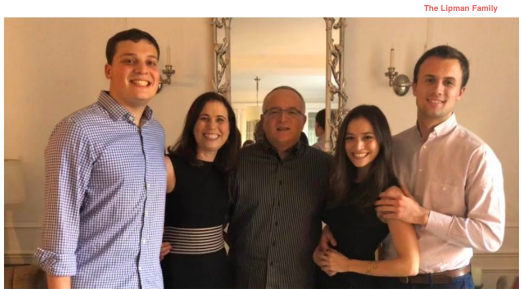

 Login
Login

